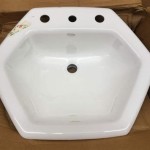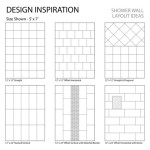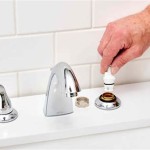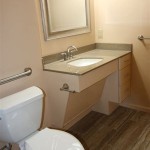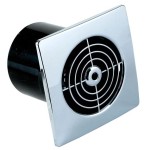Square Bathroom Sinks: A Modern Design Choice
Square bathroom sinks have emerged as a prominent design trend in contemporary bathroom aesthetics. Their clean lines, geometric precision, and ability to complement various design styles make them a versatile choice for homeowners and designers alike. The appeal of square sinks extends beyond mere aesthetics; they offer a unique combination of functionality, space efficiency, and visual impact that can transform the overall feel of a bathroom.
This article explores the nuances of square bathroom sink design, delving into the various types available, their advantages and disadvantages, considerations for installation, and how they integrate into different bathroom styles. It provides a comprehensive overview for individuals considering incorporating this modern fixture into their homes.
Types of Square Bathroom Sinks
The market offers a diverse range of square bathroom sinks, each designed to cater to specific needs and aesthetic preferences. Understanding the different types is crucial in choosing the most suitable option for a particular bathroom space. The primary categories include:
Vessel Sinks: Vessel sinks, also known as above-counter sinks, are designed to sit directly on top of the bathroom counter. Their prominent placement makes them a focal point in the bathroom design. Square vessel sinks offer a bold, modern look and can be paired with tall faucets to accommodate their height. They are relatively easy to install, typically requiring only a hole for the drain and faucet connections.
Undermount Sinks: Undermount sinks are installed beneath the countertop, creating a seamless and clean aesthetic. The edges of the sink are mounted to the underside of the countertop, leaving a smooth, uninterrupted surface. Square undermount sinks are excellent for minimalist designs and simplifying cleaning, as there is no rim to collect dirt and debris. Installation requires precise countertop cutting and secure mounting to ensure stability.
Drop-In Sinks: Drop-in sinks, also known as self-rimming sinks, are designed to be dropped into a pre-cut hole in the countertop. The rim of the sink rests on the countertop, providing support and concealing the edges of the cut-out. Square drop-in sinks offer a balance between aesthetics and ease of installation. They are a practical choice for both new construction and renovation projects.
Wall-Mounted Sinks: Wall-mounted sinks are directly attached to the wall, eliminating the need for a traditional vanity. This design creates a sense of spaciousness and is particularly suitable for smaller bathrooms or powder rooms. Square wall-mounted sinks offer a modern, minimalist aesthetic and allow for easy floor cleaning underneath. Installation requires careful planning and secure anchoring to the wall structure to support the sink's weight.
Console Sinks: Console sinks combine a wall-mounted sink with legs for added support and a more traditional look. They offer a compromise between the space-saving benefits of a wall-mounted sink and the stability of a vanity. Square console sinks provide a stylish and functional option for bathrooms that require both aesthetic appeal and structural support.
Advantages and Disadvantages of Square Sinks
Like any design choice, square bathroom sinks come with their own set of advantages and disadvantages. Weighing these factors is essential in making an informed decision.
Advantages:
Modern Aesthetic: Square sinks offer a clean, contemporary look that complements modern bathroom designs. Their geometric shape provides a sophisticated and stylish touch.
Space Efficiency: Square sinks, particularly wall-mounted and undermount models, can save space in smaller bathrooms. Their compact design allows for more efficient use of available space.
Versatility: Square sinks are available in various materials, sizes, and styles, making them adaptable to different bathroom aesthetics and functional needs.
Ease of Cleaning: Undermount square sinks, in particular, are easy to clean due to their seamless integration with the countertop. There are no crevices or rims to trap dirt and debris.
Visual Impact: Vessel square sinks can serve as a focal point in the bathroom design, adding a unique and eye-catching element.
Disadvantages:
Sharp Corners: The sharp corners of square sinks can be more prone to chipping or damage compared to rounded sinks. Extra care may be required to prevent accidental impacts.
Water Splashing: Some users find that square sinks can lead to more water splashing due to the sharper angles. This can be mitigated by choosing a deeper basin or adjusting water pressure.
Installation Complexity: Undermount and wall-mounted square sinks can require more complex installation procedures compared to drop-in or vessel sinks. Professional installation may be necessary to ensure proper mounting and plumbing connections.
Potential for Clogging: The square shape may, in some instances, lead to slower drainage or a greater tendency for debris to accumulate in the corners, potentially leading to clogs. Regular cleaning is recommended.
Cost: Depending on the material and brand, square sinks can be more expensive than traditional rounded sinks. The additional cost may be a factor for budget-conscious homeowners.
Considerations for Installation and Design Integration
Proper installation and thoughtful design integration are crucial for maximizing the benefits of a square bathroom sink. Several factors should be considered to ensure a successful outcome.
Countertop Material: The choice of countertop material significantly impacts the overall look and functionality of the bathroom. Materials like granite, quartz, marble, and solid surface are popular choices for their durability and aesthetic appeal. The countertop should be compatible with the chosen sink type, whether it's an undermount, drop-in, or vessel sink.
Faucet Selection: The faucet style and height should complement the square sink's design and functionality. Tall faucets are typically paired with vessel sinks, while shorter faucets are suitable for undermount and drop-in sinks. The faucet finish should also coordinate with the sink and other bathroom fixtures.
Plumbing Connections: Ensure that the plumbing connections are compatible with the chosen sink type and faucet. Professional plumbing services may be required to ensure proper installation and prevent leaks.
Bathroom Size and Layout: The size and layout of the bathroom should be considered when choosing a square sink. Wall-mounted and corner sinks are ideal for smaller bathrooms, while larger bathrooms can accommodate larger vessel or console sinks.
Aesthetic Style: The square sink should align with the overall aesthetic style of the bathroom. Square sinks complement modern, minimalist, and contemporary designs. Coordinate the sink's material and finish with other bathroom elements, such as tiles, cabinets, and lighting fixtures.
Accessibility: When planning the bathroom design, accessibility should also be taken into account. Wall-mounted sinks with open space underneath can be favorable for persons with impairments. The sink's height, placement, and the surrounding space should be designed to be accessible to all users.
Material Selection: Square bathroom sinks are available in a range of materials, each with its own unique properties and aesthetic qualities. Common materials include:
Ceramic: Ceramic sinks are durable, easy to clean, and resistant to stains. They are a popular choice for their affordability and versatility.
Porcelain: Porcelain sinks are similar to ceramic sinks but are fired at higher temperatures, making them more durable and less porous. They offer a smooth, glossy finish.
Stone: Stone sinks, such as granite or marble, offer a luxurious and natural look. They are durable but require regular sealing to prevent stains.
Glass: Glass sinks provide a modern and unique aesthetic. They are available in various colors and textures but can be more prone to scratches and chips.
Stainless Steel: Stainless steel sinks are durable, hygienic, and easy to clean. They offer a sleek, industrial look.
Composite Materials: Composite materials, such as quartz or acrylic, offer a balance of durability, aesthetics, and affordability. They are resistant to stains and scratches and are available in a wide range of colors and patterns.
Lighting: Proper lighting is crucial for highlighting the square sink and enhancing the overall bathroom ambiance. Task lighting, such as vanity lights, should be positioned to provide adequate illumination for grooming tasks. Accent lighting can be used to showcase the sink's design and create a focal point.
Storage: Consider the storage needs of the bathroom when choosing a square sink. Wall-mounted sinks and console sinks may require additional storage solutions, such as cabinets or shelves. Undermount sinks can be paired with vanities to provide ample storage space.
By carefully considering these factors, homeowners and designers can effectively integrate square bathroom sinks into their designs, creating stylish, functional, and aesthetically pleasing bathroom spaces.

Oval Vs Square Bathroom Sinks

Flat Bathroom Sinks Laufen Living Square Retreat Design

430mm Square Curved Sided Countertop White Basin Sintra

Modern 380mm Square Tivoli Ceramic Bathroom Basin Sink

Kohler Span Square Table Top Wash Basin In White

European Design Gold Plated Flower Wash Basin Best Ceramic Square Counter Modern Bathroom Sink Bowls

White Stone Resin 425mm Square Counter Mounted Basin Agio

New Design 304 Rose Gold Stainless Steel Square Bathroom Sinks Wash Basin China Sink And

Glass Design Four Lux Modern Square Counter Top Wash Basin 2 Colors 40x40 Cm Flobali

Square Overmount Bathroom Sinks Design Ideas

